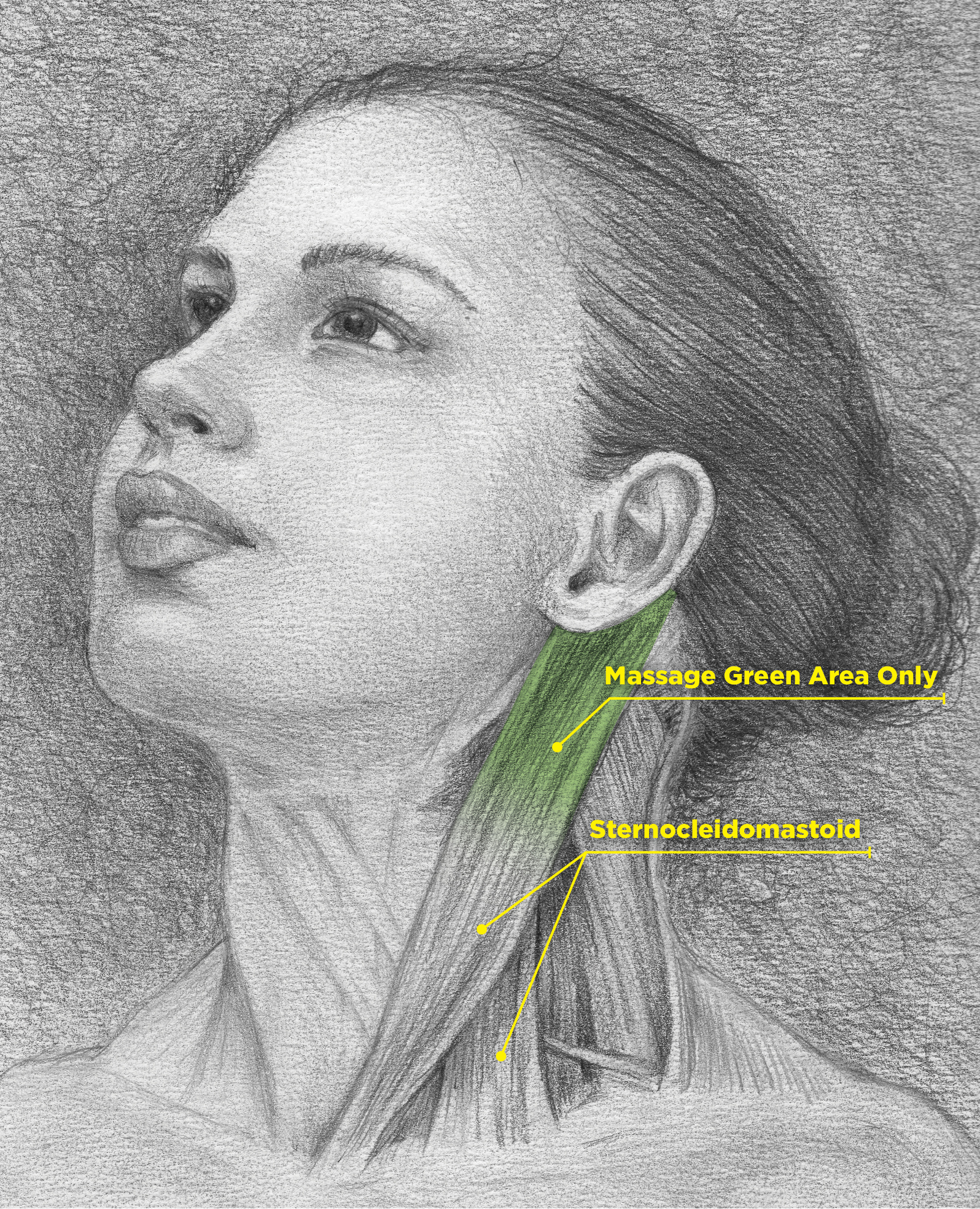Not All Acupuncture Points are Created Equal
337 acupuncture points exist along 12 main “meridians” that Chinese practitioners plotted 4,000 years ago. Your headache pain likely will benefit from but a few of these points. Interestingly, you will find some of the main headache reducing acupuncture/acupressure points coincide with the trigger points of Western medicine.
All acupuncture points are not trigger points. What is the difference between the two?
Acupuncture/acupressure points can have wide-ranging effects throughout the body. For instance, you press a point in your foot, and you may witness a melting away of your headache and neck pain.
Trigger points do not have this far-reaching effect and tend to be more localized. Notwithstanding, some trigger points in your trunk can affect extremity symptoms. However, best not to digress.
Myofascial Trigger Points – the Sternocleidomastoid Muscle
Dr. Janet Travell and Dr David Simon and Lois Simon, PT authored the classic “Myofascial Pain and Dysfunction. The Trigger Point Manual.” In it, they discussed how to treat these trigger points.
They devoted an entire chapter to the sternocleidomastoid muscle at the side of your neck. Stimulate sternocleidomastoid trigger points and you can relief headaches in the front, side, top and back of your head. Travell and Simon found that if you treat a right-sided sternocleidomastoid muscle, headache relief can even cross over to relieve left frontal headache pain. Most treated points do not produce cross-over effects.
Travell and Simon also noted that you can treat many other symptoms besides headaches with the trigger points in this muscle. Dizziness and vertigo can fade quickly from treating the sternocleidomastoid trigger points.
Of course, inner ear dysfunction produces many cases of dizziness. However, if your dizziness stems from the sternocleidomastoid, treatment here will improve your dizziness more rapidly than the inner ear treatment. Check with your local physical therapist to help you sort this out.
Your physical therapist can supervise you doing a dizziness triggering activity, such as getting off the treatment table. If you become dizzy, your therapist presses points housed within the upper sternocleidomastoid muscle. If you then repeat the activity, you may find substantial improvement, well over 50%. Consequently, the sternocleidomastoid muscle would likely play a large role in your dizziness troubles.
Overlap of Trigger Points with Acupuncture Points in the Sternocleidomastoid Muscle
Locate important acupuncture point Triple Heater 16 in the back border of your sternocleidomastoid muscle at a level with the angle of your jawbone. Use your opposite index and middle finger to reach across your chest to massage this point. You can use your fingers on the same side of the tender muscle, but you won’t relax the muscle completely.
Find another companion point Small Intestine 17 in the upper front border of the sternocleidomastoid muscle, just behind the angle of your jaw at the same level as Triple Heater 16. Do not go too low on the sternocleidomastoid muscle as that will bring you too close to the front of your neck.
These acupoints provide the same headache and dizziness relief that the trigger points do. Avoid any point that produces an increase in symptoms of headache pain or dizziness. Generally, I use Triple Heater 16 as my first treating point. If needed I then move to Small Intestine 17 and other sternocleidomastoid muscle points. Sorry about the Small Intestine nomenclature. I do find Triple Heater to be a much cooler moniker.
Profound Jaw Pain Relief
I find that the Triple Heater 16 point also exerts a profound effect on temporomandibular dysfunction. You may open your mouth easier and farther as you put pressure on this point. What’s more, my clients bring food such as carrots or hard granola bars to their physical therapy appointment to learn how to rid themselves of chewing pain.
Normally biting down on these hard foods would hurt a client with temporomandibular joint dysfunction. Yet, when this point is pressed, the pain goes away. Release the point, chew again and the pain returns. Press the Triple Heater 16 acupoint once again, and the chewing pain disappears.
Other Acupoints Near the Sternocleidomastoid Muscle
Find Triple Heater 17 Acupoint behind the lobule of your ear, in the tiny valley between the angle of your jaw and the protruding bone of your skull. Much further down along the back part of the sternocleidomastoid muscle you will find tender point Small Intestine 16.
You can use these points to treat various head, neck, ear, and jaw conditions. The sternocleidomastoid muscle possesses other acupoints further down towards the front of your neck. However, stay away from these points due to their proximity to sensitive areas in the front of the neck.
Coincidentally, the two meridians of the Triple Heater and Small Intestine both have number 16 and 17 mentioned in the sternocleidomastoid region. If you are not sure how to find the acupoints, rub the entire side of the neck area along the upper sternocleidomastoid. Just like rubbing your hand on a target, you will contact the bull’s eye often enough to get results.
–You understand that if not done properly, some techniques and exercises described in this blog could harm you. Any activities you perform are at your own risk, and you expressly agree to waive any claims against the author for any harm that may arise from your own actions. By reading this blog and conducting these exercises, you accept this risk. This blog provides content related to physical and/or mental health issues. As such, your use of techniques described acts as your acceptance of this disclaimer.
-Consult Chapter 2 in my book, “Calming the Headache Storm” to make sure the headache is not the sign of a more serious problem. The techniques, advice and strategies contained in this blog may not be suitable for every individual and should be abandoned if your headache increases. Seek the advice of your physician.
